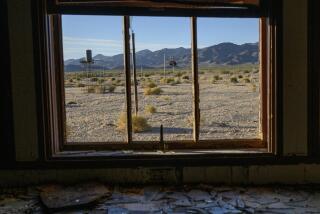Fewer g’days ahead
- Share via
In the 1959 Gregory Peck classic “On the Beach,” humanity’s last holdouts in the aftermath of a global nuclear war huddle in Australia and wait for the inevitable atomic wind to carry the rest of the species away. When it comes to today’s real-world climate crisis, though, Australia is going first, not last.
As Times staff writer Julie Cart reported Thursday, Australia appears to be experiencing the effects of climate change earlier and more dramatically than most of the other inhabited parts of the globe. A Southern Hemisphere continent that was already a land of climate extremes has become more so in recent years. Even as the tropical north is deluged by flooding and warmer ocean currents are spawning more powerful cyclones, the parched south and interior have turned into baking dead zones. The results: vast brush fires, killer heat waves, increased tropical diseases, ruined crops, loss of livestock, severe water shortages and quickening species extinction.
Climate skeptics believe that Australia is simply in the midst of a cyclical change in weather patterns, or that the steel-warping temperatures turning the interior into a Martian landscape are the result of a natural warming period rather than a phenomenon with human causes. Most of these skeptics live outside Australia. There, the effects are too dramatic and the science too conclusive to leave much doubt. The country’s biggest tourist draw, the Great Barrier Reef -- among the world’s most biologically diverse places and the largest structure built by living organisms -- is vanishing before Australians’ eyes. The Intergovernmental Panel on Climate Change estimates that this astonishing natural wonder will be “functionally extinct” by 2050.
If Australia serves as a harbinger of things to come for the rest of the world, its political response shows how difficult it will be to solve the problem. Progress is being made, but it’s achingly slow. A country that gets 80% of its electricity from coal (compared with 50% in the U.S.) is deeply reluctant to pay the price of switching to renewable energy sources; so far, the government has agreed to cut greenhouse gas emissions just 5% by 2020. That won’t do much to reduce the concentration of carbon in the atmosphere and slow the pace of global warming.
Can the United States, where the impacts of climate change aren’t yet nearly as apparent, be expected to do better? For Australia’s sake, and our own, we must. Soon, you may not have to travel to the outback to see a desolate wasteland; it may be coming to your neighborhood.
More to Read
Sign up for Essential California
The most important California stories and recommendations in your inbox every morning.
You may occasionally receive promotional content from the Los Angeles Times.










